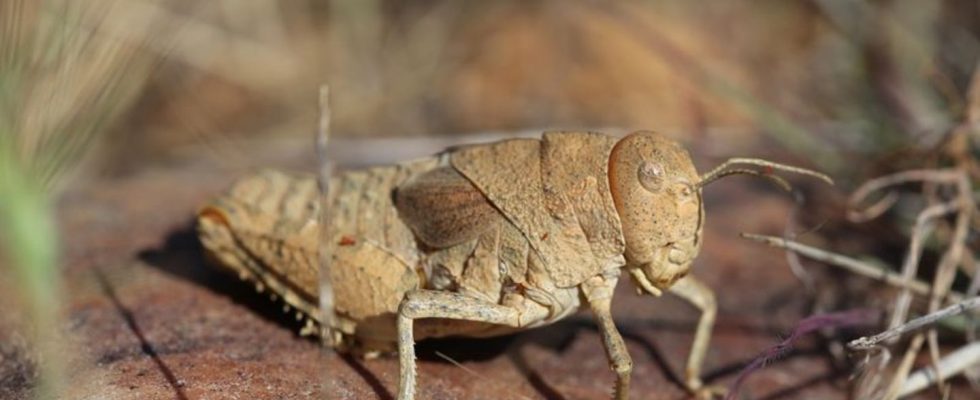There are thousands of animal and plant species in Europe. But many species are doing poorly. Now researchers have presented alarming figures.
Around two million species are endangered worldwide – twice as many as assumed in the most recent global inventory of the World Biodiversity Council (IPBES) in 2019. This is the result of an international study published in the specialist magazine “PLOS One”. According to the study, a fifth of all animal and plant species examined in Europe are threatened with extinction in the coming decades; plants and invertebrates are particularly badly affected.
The researchers included all 14,669 animal and plant species that were on the Red List for Europe at the end of 2020 in the study. That’s ten percent of the continent’s species. The International Union for Conservation of Nature (IUCN) puts the species whose population has been analyzed on this list. Many are at little or no risk, but others are threatened with extinction or are even extinct.
Invertebrates particularly affected
The team led by first author Axel Hochkirch from the National Museum of Natural History Luxembourg and the University of Trier analyzed all known vertebrate species (amphibians, birds, fish, reptiles and mammals) in Europe as well as important invertebrate animal groups such as butterflies and bees and various plant species. 2,839 of the 14,669 species examined by the team, a total of around 19 percent, are threatened with extinction in Europe. 125 animal and plant species are already considered extinct, regionally extinct or possibly extinct.
The study describes a particular threat to plants native to Europe: around 27 percent are threatened with extinction. The numbers are also high among animal species – 24 percent of invertebrates and 18 percent of vertebrates are affected. This pattern is remarkable, according to the research team, considering that much more attention is paid to vertebrates. “One of the most important findings is that the number of endangered species does not differ significantly across the different species groups,” says Hochkirch.
More precise information, more alarming result
Other experts consider the current data to be extremely relevant and credible. Matthias Glaubrecht, Professor of Biodiversity at the University of Hamburg, explains: “The new study shows much more clearly and comprehensively than before that significantly more species are threatened with extinction. Europe is one of those regions for which we still have the best data. If “The situation here is already so dramatic, this means that the biodiversity crisis in other, far more species-rich regions is very likely to be even more explosive – especially in the tropical regions that are still insufficiently researched, such as Asia and Africa.”
Using new data sets, the team also calculated the number of animal, plant and fungal species threatened with extinction worldwide: at two million, the number is twice as high as in the most recent IPBES report from 2019. At that time, IPBES came to the conclusion that One million of the estimated eight million species are threatened. The doubling to two million threatened species within a few years can be justified with new and more precise information, explains Josef Settele, co-author of the last IPBES report: “The studies ultimately build on each other and thus also reflect the progress in knowledge. In the IPBES report 2019 A data gap was also mentioned, which we are getting closer to closing.”
The data situation remains a problem, write the study authors: “Our analysis shows some major gaps in knowledge and the corresponding need for research.” Many species, especially among the invertebrates, have not yet been described. An exact assessment of the condition is often difficult: if there are only very few specimens left in a region, they can hardly be found in field studies. Glaubrecht also confirms this: “We don’t know enough about all of these species to have even noticed their disappearance for a long time. There are species that we are destroying faster than we can research them.”
Who’s to blame?
The causes of species extinction are diverse; the team sees the greatest threat as the intensive economic use of land areas and seas, which leads to the loss of habitats. “While the finding that agricultural land use change poses a major threat has been made many times, our analysis is the most comprehensive and definitive to date confirming the extent of this threat on a continental scale,” the authors said. The overuse of biological resources and extreme weather caused by climate change also pose a massive threat to biodiversity.
But the researchers also see reason for hope: new settlements of animal species and special protection can help to preserve biodiversity. “It is important to initiate measures to protect endangered species. These have already had a lot of success with vertebrates, as evidenced by the spread of previously endangered species such as black storks, sea eagles, peregrine falcons, eagle owls and otters,” says Hochkirch. “It is important to implement the necessary conservation measures in a timely manner. We already have enough evidence to act – what we lack is action.”
The environmental foundation WWF is also pushing for this. The study once again makes it clear that more support from politicians is urgently needed and that they must fulfill their commitments from the World Nature Summit in Montreal in December 2022. Among other things, the international community agreed to protect at least 30 percent of the world’s land and sea areas by 2030. The Environmental Foundation writes that the promise of financial aid made by Chancellor Olaf Scholz should not be broken. Scholz promised at the UN General Assembly in September 2022 that Germany would provide 1.5 billion euros annually for international biodiversity protection from 2025.

